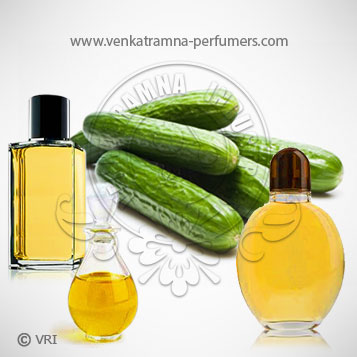
| Botanical Name | Cucumis sativus |
| Common Name | Cucumber, Cuke, Concombre, Komkommer, Gurke, Pepino, Cohombro, Cetriolo |
| Country of Origin | India |
| Solubility | Not Applicable |
| Specific Gravity | 1.179–1.184 @ 20°C |
| Optical Rotation | ( + 10° ) - ( + 25° ) |
| Refrective Index | 1.522–1.590 @ 20°C |
| PlantPart | Seed |
| Bland With | Blends with olive oil, cucumber juice, vitamin C and other antioxidants to re hydrate the skin with essential nutrients. |
| CAS No | 8007 –75 – 8 |
| Flash Point | 167 °F |
| Extraction Method | Cold Pressed |
Cucumber is widely known for its cool and refreshing effect. High in mineral content, cucumber is a valuable source of potassium, sodium, magnesium, sulphur, sillicon, chlorine, and fluorine. The oil is extracted by cold press method to obtain high mineral content. Cucumber oil is put to brilliant use in moisturizing soaps; fresh baths at spa’s and even in massage oils to refresh the aroma of body.
The cucumber is believed to be native to India, and evidence indicates that it has been cultivated in Western Asia for 3,000 years. The cucumber is also listed among the foods of ancient Ur and the legend of Gilgamesh describes people eating cucumbers. Some sources also state that it was produced in ancient Thrace, and it is certainly part of modern cuisine in Bulgaria and Turkey, parts of which make up that ancient state. From India, it spread to Greece (where it was called “vilwos”) and Italy (where the Romans were especially fond of the crop), and later into China.
Color : Straw colour liquid with very little scent characteristic of most carrier oils,
Aroma : Mild scent of carrier oils
Cucumber Seed Oil contains a high amount of Linoleic, or Omega 6, Fatty Acid. The oil also contains notable amounts of Oleic and Palmitic Fatty Acids.
Cucumber oil is used in various cosmetic applications for its cooling, nutritive, and soothing properties, and plays a function in skin care, hair care and nail creams.